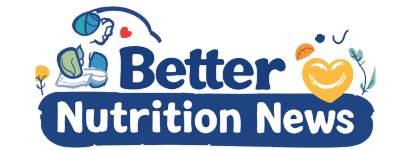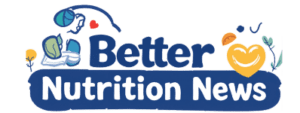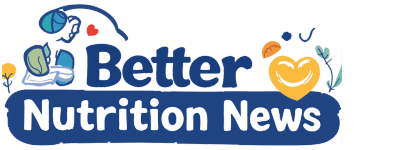In the ever-evolving world of nutritional science, staying informed means far more than glancing through trending headlines or relying on outdated textbooks. For today’s professionals, students, and health-conscious readers, engaging with contemporary research is essential. The rise of digital publications, open-access journals, and real-time updates from leading universities has revolutionized how we consume knowledge. Yet, with this abundance of information comes the challenge of discernment. How do you separate quality research from speculative noise? How can a nutritionist’s home page serve as a reliable portal to the most critical and credible insights in the field?
You may also like: Best Foods for Cognitive Function: What Science Reveals About Brain Nourishment, Focus, and Mental Clarity
These questions are more relevant than ever, particularly in an age where consumers are bombarded by conflicting claims about diets, superfoods, and supplements. Navigating nutrition research articles effectively requires not only scientific literacy but also a framework for identifying trustworthy sources, interpreting complex data, and applying findings responsibly. This guide explores how to navigate this dynamic landscape with confidence, credibility, and clarity.

Why Nutrition Research Articles Deserve Your Daily Attention
Reading nutrition research articles regularly is not merely a professional obligation for dietitians and health coaches; it’s a gateway to transformative understanding. The human body is incredibly responsive to dietary intake, and new discoveries are constantly reshaping our comprehension of how nutrients impact metabolism, inflammation, microbiota, and chronic disease. While popular media tends to oversimplify this complexity, peer-reviewed research offers the nuanced, evidence-based insights that real progress depends upon.
Nutrition professionals who engage directly with research can better tailor their recommendations to reflect the current consensus—or evolving debates—within the scientific community. For instance, the shifting stance on dietary fats, fiber diversity, or the glycemic index could dramatically affect meal planning strategies for clients with metabolic concerns. More importantly, original research allows practitioners to evaluate the methodologies behind claims, rather than relying solely on secondhand interpretations.
This is especially true when it comes to complex dietary topics like intermittent fasting, microbiome modulation, or bioavailability of plant-based nutrients. These areas are ripe with both promise and confusion. By reading nutrition research articles firsthand, nutritionists can maintain an informed, flexible approach that balances innovation with scientific caution.
The Critical Role of a Nutritionist’s Home Page in Guiding Reliable Learning
In an age of information overload, the nutritionist’s home page has evolved from a static bio to a dynamic hub for professional development and public education. A well-curated homepage functions as both a gateway and a filter—highlighting the most relevant research updates, distilling complex topics into accessible formats, and linking to trustworthy resources. For clients, students, or peers, it offers a living snapshot of a practitioner’s commitment to evidence-based practice.
The modern nutritionist’s home page should reflect a clear structure for engaging with new literature. This might include a regularly updated blog featuring interpretations of the latest studies, a resource section linking to top nutrition journals, or embedded feeds from research databases. Each element plays a role in guiding readers toward credible content while helping them develop the analytical tools needed to interpret it.
Just as importantly, a homepage should exemplify transparency and professional standards. Summarizing nutrition research articles in ways that are accurate but not alarmist can cultivate trust and authority. By providing commentary on new studies, or even critiquing popular health myths, nutritionists transform their homepages into active educational platforms that reflect both their expertise and their commitment to public health.
Understanding the Landscape: Where to Find High-Quality Nutrition Research Articles
The first step in navigating research effectively is knowing where to look. With so many publications available online, not all sources are created equal. Peer-reviewed journals like The American Journal of Clinical Nutrition, Nutrition Reviews, and Advances in Nutrition offer gold-standard content vetted by experts in the field. These journals publish rigorous studies and systematic reviews that are foundational to academic and clinical work.
Emerging platforms such as Frontiers in Nutrition or Nutrients provide open-access models, making cutting-edge research available to a wider audience without subscription barriers. This democratization of data is a powerful tool for nutritionists working in community settings, education, or digital content creation.
However, the accessibility of content doesn’t always guarantee its quality. Nutrition professionals must stay mindful of the differences between randomized controlled trials, cohort studies, meta-analyses, and observational reports. A single study’s findings are not a conclusion—they are a contribution. Understanding these nuances is essential when applying insights responsibly, especially when client well-being is at stake.
To facilitate navigation, a nutritionist’s home page can feature categorized links to reputable nutrition journals, tips for evaluating research design, and tools for reading abstracts and conclusions critically. This empowers readers to move beyond headlines and delve into the research themselves.
How to Interpret Nutrition Research Articles Without Losing the Big Picture
Reading a scientific paper can be daunting, even for experienced professionals. Dense language, complex statistics, and ambiguous conclusions often make nutrition research articles seem inaccessible. Yet, developing fluency in research interpretation is a skill that pays dividends across clinical, educational, and content creation roles.
Start with the abstract, but don’t stop there. The abstract provides a snapshot but often omits critical limitations or contextual details. Reading the introduction and methods sections allows you to evaluate how the study was structured, what variables were controlled for, and whether the sample size was adequate. These details matter greatly in nutrition science, where human variability, food intake measurement, and compliance can all affect outcomes.
Results sections should be interpreted cautiously. Statistical significance is not synonymous with clinical relevance. A change in biomarker levels may reach statistical significance but still fall within normal physiological ranges. Moreover, nutrition interventions often show modest effects over short periods—a reflection of the complex, long-term nature of dietary impact.
A thoughtful nutritionist’s home page might include educational posts or videos breaking down these concepts for readers. By teaching others how to interpret study design, statistical power, and real-world applicability, nutritionists foster a more scientifically literate audience.
Key Features Every Nutritionist’s Home Page Should Include
To fully embrace the role of a research-informed educator, a nutritionist’s home page should feature a few essential elements. First, it should provide direct links to the most reputable nutrition journals and databases. Regular exposure to publications like The Journal of Nutrition or Public Health Nutrition keeps both the practitioner and their audience aligned with current scientific dialogue.
Second, the homepage should offer regular analysis or summaries of recent nutrition research articles. These do not need to mimic the density of academic reviews; rather, they can provide practical takeaways, contextual explanations, or myth-busting discussions. This builds trust while demonstrating the nutritionist’s fluency in the literature.
Third, the page should contain tools or resources to aid independent exploration. These might include reading guides, glossaries for scientific terms, or tutorials on evidence grading. Encouraging readers to build their own analytical skills ensures they do not rely solely on secondary interpretations.
A fourth feature, often overlooked, is transparency. When a nutritionist expresses uncertainty, shares limitations of current research, or updates their guidance based on new findings, it sends a powerful message of integrity. In doing so, their home page becomes a living document of professional growth and scientific humility.
Building Authority Through Content Curation and Thought Leadership
In today’s digital ecosystem, authority is built not just through credentials but through curation and commentary. Nutritionists who consistently engage with and comment on current research establish themselves as trusted voices. This is especially important when working with complex or controversial topics like ketogenic diets, intermittent fasting, or food sensitivity testing.
Content curation allows practitioners to spotlight high-quality nutrition research articles and guide their audiences through key takeaways. Whether through blog posts, newsletters, social media threads, or embedded videos, this content can showcase both the value of science and the practitioner’s unique interpretive lens.
By combining personal insights with citations from top nutrition journals, nutritionists model how to engage critically and compassionately with data. Over time, this approach creates a robust professional identity rooted in both scientific rigor and client-centered thinking. A well-maintained home page becomes not just a source of information but a destination for thoughtful discussion and lifelong learning.
How to Stay Ahead of the Curve Without Falling for Hype
With the rapid pace of publication, it can feel impossible to stay current without becoming overwhelmed. Yet, savvy navigation doesn’t require reading every article—it requires strategic focus. Setting up alerts from leading journals, subscribing to research digests, or following expert-curated newsletters are efficient ways to stay in the loop.
Equally important is the ability to discern hype from substance. Not every article that trends online reflects robust evidence. Nutritionist home pages should model this discernment by distinguishing between promising hypotheses and actionable evidence. Citing studies responsibly, explaining limitations, and offering context help build reader trust and promote health literacy.
Engaging with continuing education, attending academic webinars, and participating in research forums can also bolster credibility and ensure that practitioners are not swayed by sensationalist media. A home page that reflects this ongoing engagement becomes an invaluable resource for both peers and the public.

Frequently Asked Questions (FAQ): Advanced Insights into Nutrition Science and Application
1. How is the field of nutrition science evolving beyond traditional diet plans?
The field of nutrition has expanded far beyond conventional calorie counting and food pyramids. New approaches now emphasize personalized nutrition, which uses genetic, microbiome, and lifestyle data to tailor dietary recommendations. This evolution is well-documented in recent nutrition research articles, where studies increasingly explore nutrigenomics and metabolic individuality. For instance, someone with a predisposition to insulin resistance may respond differently to carbohydrates than others, requiring custom macronutrient ratios. On the nutritionist home page of many modern clinics, you’ll often find references to precision nutrition, signaling a shift toward evidence-based customization that integrates insights from peer-reviewed nutrition journal findings.
2. What are the most overlooked psychological factors that affect nutritional habits?
Many people underestimate the deep psychological roots of their eating behaviors. Emotional eating, reward cycles, and stress-driven choices often override rational nutritional planning. These behavioral patterns are being studied in nutrition research articles that highlight how chronic stress affects cortisol levels, which can in turn increase cravings for high-fat, high-sugar foods. A reputable nutritionist home page may now offer resources or referrals for integrative counseling that supports both the psychological and dietary aspects of health. By combining cognitive behavioral therapy with the findings reported in top-tier nutrition journals, clients gain sustainable tools to modify ingrained habits.
3. How is artificial intelligence transforming modern nutritional counseling?
Artificial intelligence is reshaping nutritional counseling by offering real-time analysis of dietary patterns, nutrient gaps, and even metabolic markers. AI-powered apps now use large datasets from nutrition journal studies and patient inputs to create adaptive meal plans. These tools are being integrated into platforms you might encounter on a nutritionist home page, allowing users to track not just calories but also micronutrient sufficiency and eating behavior over time. Some nutrition research articles have also examined how AI improves adherence to medical nutrition therapy for diabetes and cardiovascular disease by offering predictive meal guidance.
4. Can wearable technology meaningfully impact dietary choices?
Absolutely—wearables now offer continuous feedback on heart rate variability, glucose levels, and physical activity, creating a feedback loop that influences food choices. Devices like continuous glucose monitors (CGMs) provide data that is being analyzed in recent nutrition research articles to determine glycemic responses to specific meals. These insights are often shared via client dashboards linked from a nutritionist home page, helping users adjust their intake in real time. Several nutrition journal publications have validated that wearable-integrated nutrition plans improve dietary adherence, especially among individuals managing metabolic syndrome or insulin resistance.
5. What role does gut microbiota play in modern nutritional science?
The gut microbiome is now considered a cornerstone of nutritional health. Its balance affects not only digestion but also mood regulation, immunity, and chronic disease risk. Cutting-edge nutrition research articles explore how specific strains of bacteria influence weight, nutrient absorption, and even neurotransmitter production. You’ll often find nutritionist home page content emphasizing prebiotic- and probiotic-rich diets as part of personalized protocols. Meanwhile, nutrition journal studies increasingly recommend fecal and genomic profiling to determine the most beneficial dietary interventions for each individual.
6. How are plant-based diets evolving in scientific literature and practice?
Plant-based diets are no longer viewed simply as vegetarianism or veganism. Current nutrition research articles differentiate between whole-food plant-based diets and ultra-processed plant-based alternatives, with the former associated with better outcomes in terms of inflammation, cardiovascular health, and microbiome diversity. Reputable nutrition journal entries increasingly call for clarification between these subcategories. A credible nutritionist home page will often guide clients through the nuances of integrating a nutrient-dense plant-based plan that includes adequate protein, B12, and omega-3s, thus avoiding common deficiencies that once plagued vegan diets.
7. Are there cultural or socioeconomic factors influencing nutritional research?
Yes, and these factors are finally gaining the attention they deserve. Some nutrition research articles now highlight disparities in access to nutritious foods and culturally appropriate dietary guidance. These disparities can skew data unless they are acknowledged and corrected for in study design. The most inclusive nutrition journal articles now stratify results based on income, race, geography, and cultural food preferences to ensure their findings are relevant across populations. A forward-thinking nutritionist home page may also offer multilingual content and sliding-scale services to better serve diverse communities.
8. How reliable are online nutrition resources compared to peer-reviewed content?
The internet is flooded with nutrition advice, but not all of it meets scientific standards. Peer-reviewed nutrition journal publications undergo rigorous scrutiny, while content on a nutritionist home page typically reflects an individual practitioner’s clinical experience and professional affiliations. Reliable sources often cite nutrition research articles to support their claims, ensuring transparency and accuracy. When assessing online resources, look for credentialed authors, citations from recognized journals, and evidence-based approaches. Avoid platforms that rely solely on anecdotal evidence or fail to distinguish between correlation and causation.
9. What is the future of evidence-based supplementation in clinical nutrition?
Supplementation is shifting from generic multivitamins to targeted, evidence-based protocols informed by biomarker testing. According to emerging nutrition research articles, deficiencies in nutrients like magnesium, vitamin D, and omega-3s are better addressed through individualized assessment rather than blanket recommendations. This trend is reflected on many nutritionist home page platforms, where you’ll find tools for blood testing and DNA analysis. High-quality nutrition journal content increasingly emphasizes bioavailability, dosing accuracy, and long-term outcome studies to support or refute the use of specific supplements.
10. How can professionals stay current with rapid developments in nutritional science?
With new data emerging constantly, it’s vital for nutrition professionals to stay updated. Subscribing to high-impact nutrition journals is a foundational strategy, as is attending conferences that discuss the latest nutrition research articles in depth. Many nutritionist home page platforms now feature blogs, newsletters, or continuing education sections designed to keep practitioners informed. Digital libraries and AI-curated research tools also allow for efficient filtering of relevant studies by topic, outcome, or population group. Staying informed isn’t just about credibility—it’s about ensuring clients receive care that reflects the latest scientific consensus.

Conclusion: Redefining Expertise Through Research Fluency and Digital Presence
In a time when nutrition information is abundant but often unreliable, the ability to navigate research with clarity and confidence is more critical than ever. Nutrition professionals who ground their practice in the latest findings from respected nutrition journals not only enhance their personal expertise but elevate the standard of care for those they serve. A nutritionist’s home page is not just a digital storefront; it is a dynamic space where science, communication, and professional integrity converge.
By consistently engaging with credible nutrition research articles, presenting thoughtful commentary, and curating reliable resources, nutritionists can position themselves as both scholars and educators. Their digital presence becomes a reflection of their commitment to lifelong learning, evidence-based practice, and public empowerment. In doing so, they help shape a more informed, health-literate society—one article, one post, one insight at a time.
nutrition science education, peer-reviewed nutrition studies, evidence-based dietary guidelines, academic nutrition blogs, scientific nutrition news, continuing education for dietitians, understanding clinical trials, public health nutrition insights, interpreting dietary research, functional medicine research, best nutrition blogs for professionals, how to read nutrition science, critical thinking in dietetics, reliable health information sources, nutrition studies explained, nutrition science communication, nutritional epidemiology basics, health literacy and diet, debunking diet myths, scientific accuracy in health media
Further Reading:
What Makes Nutrition Research So Difficult to Conduct and Interpret?
Explores what and how we eat in the context of health, sustainability and 21st century food science
Disclaimer: The content published on Better Nutrition News (https://betternutritionnews.com) is for informational and educational purposes only. It is not intended as a substitute for professional medical advice, diagnosis, or treatment. Always seek the guidance of a qualified healthcare professional before making any changes to your diet, nutrition, or wellness practices. The opinions expressed by authors and contributors are their own and do not necessarily reflect those of Better Nutrition News.
Better Nutrition News and its affiliates make no representations or warranties regarding the accuracy, completeness, or reliability of the information provided. We disclaim all liability for any loss, injury, or damage resulting from the use or reliance on the content published on this site. External links are provided for reference purposes only and do not imply endorsement.



